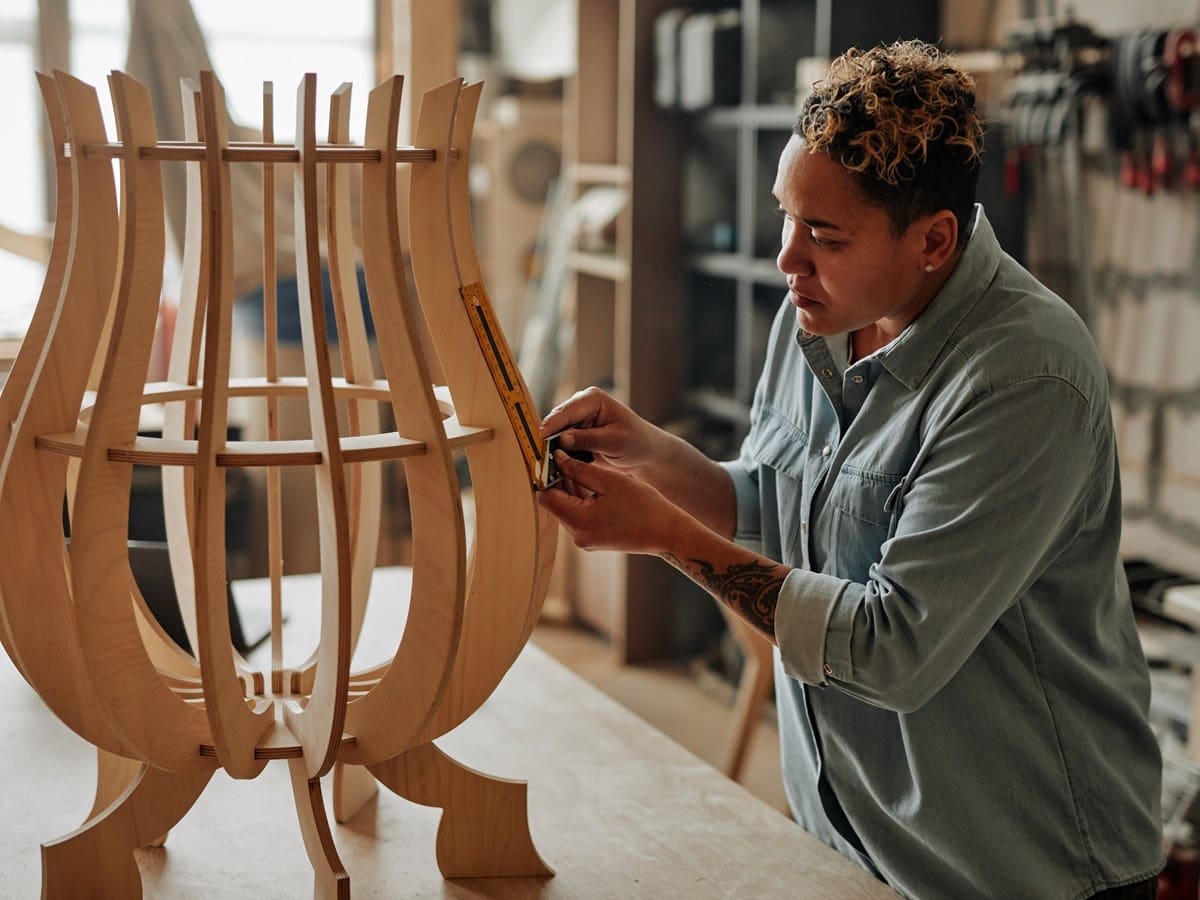In an era where mass-produced furniture dominates the market, the allure of bespoke furniture design has become more pronounced for those seeking uniqueness and personalisation in their living spaces. Bespoke furniture, tailored to meet the specific needs and aesthetic preferences of an individual, stands out for its craftsmanship, quality, and the sheer joy of owning something that is one-of-a-kind. This exploration into the world of bespoke furniture design will take you through its benefits, the design process, the materials commonly used, and how it compares to off-the-shelf options.
The allure of bespoke furniture
The primary appeal of bespoke furniture lies in its customisability. Unlike standard pieces, which are made to fit a broad range of needs and spaces, bespoke items are crafted with a particular space, style, and user in mind. This custom approach means that every piece can fit perfectly into the designated area, complementing the existing decor and enhancing the overall aesthetic of a room. Moreover, the choice of materials, finishes, and design details are all in the hands of the buyer, allowing for a truly personalised item that reflects individual tastes and lifestyles.
The bespoke furniture design process
The journey of creating a bespoke furniture piece is both collaborative and intricate. It typically starts with a consultation, where the designer and client discuss needs, preferences, and inspirations. This is followed by the development of design concepts, often presented through sketches or 3D renderings, allowing the client to visualise the finished product and make any necessary adjustments before the construction begins.
Attention to detail is paramount in the design process, as it ensures the final piece not only looks as envisioned but also serves its intended function flawlessly. This phase may involve multiple revisions to get everything just right, demonstrating the personalised service and dedication to perfection that bespoke furniture design offers.
Material matters in bespoke furniture
The choice of materials in bespoke furniture design is vast, offering options that range from traditional woods to modern metals and composites. Each material brings its unique characteristics to the table, influencing both the appearance and functionality of the finished piece. Hardwoods like oak and walnut are popular for their durability and timeless appeal, while softer woods can offer a more cost-effective solution without compromising on aesthetics.
Incorporating materials like glass, metal, or stone can add a contemporary edge to a piece, allowing for a blend of textures and styles that reflect current trends or personal preferences. Additionally, the use of sustainable and eco-friendly materials has gained momentum, catering to environmentally conscious consumers who value both design and sustainability.
A notable mention in the materials palette is MDF cut to size, a versatile option favoured for its smooth finish and uniformity, making it ideal for a wide range of furniture pieces. Its ability to be precisely cut to any size allows for customisation and intricate detailing, which is essential in bespoke furniture design. This material exemplifies the adaptability and innovation that bespoke furniture brings to the world of interior design, offering endless possibilities in terms of shape, size, and finish.
Bespoke vs off-the-shelf furniture
While off-the-shelf furniture offers convenience and immediacy, it often falls short in terms of individuality and quality. Bespoke furniture, on the other hand, is made to last, using high-quality materials and construction techniques that ensure durability and strength. The difference in quality is not just in the materials used but also in the craftsmanship. Bespoke pieces are typically made by skilled artisans who invest time and care into every detail, from the initial design to the final finishes.
The ability to tailor each aspect of the furniture to the client’s needs means that bespoke pieces can also offer superior comfort and functionality. Whether it’s a sofa designed to fit a specific room layout or a desk built to accommodate particular work habits, bespoke furniture can enhance the usability of a space in ways that off-the-shelf items cannot match.
The investment in bespoke furniture
Choosing bespoke furniture is an investment, not just in a physical item, but in the beauty, comfort, and functionality it brings to a space. While the upfront cost may be higher than that of mass-produced pieces, the value lies in the longevity and personal significance of bespoke items. These are pieces that can be cherished for years, often becoming heirlooms that carry personal stories and memories.
Moreover, investing in bespoke furniture supports artisans and small businesses, contributing to the preservation of traditional crafts and skills that are invaluable to the creative industry.
Conclusion
The world of bespoke furniture design is one of endless possibilities, where creativity, craftsmanship, and personalisation come together to create pieces that are as unique as the individuals who own them. In a time when the quest for individuality and quality in interiors has never been more pronounced, bespoke furniture offers a way to express personal style and create spaces that truly feel like home. Whether it’s through the use of traditional materials or innovative solutions like MDF cut to size, it continues to push the boundaries of creativity and excellence in the world of interior design.
Featured image via seventyfourimages – Envato Elements




